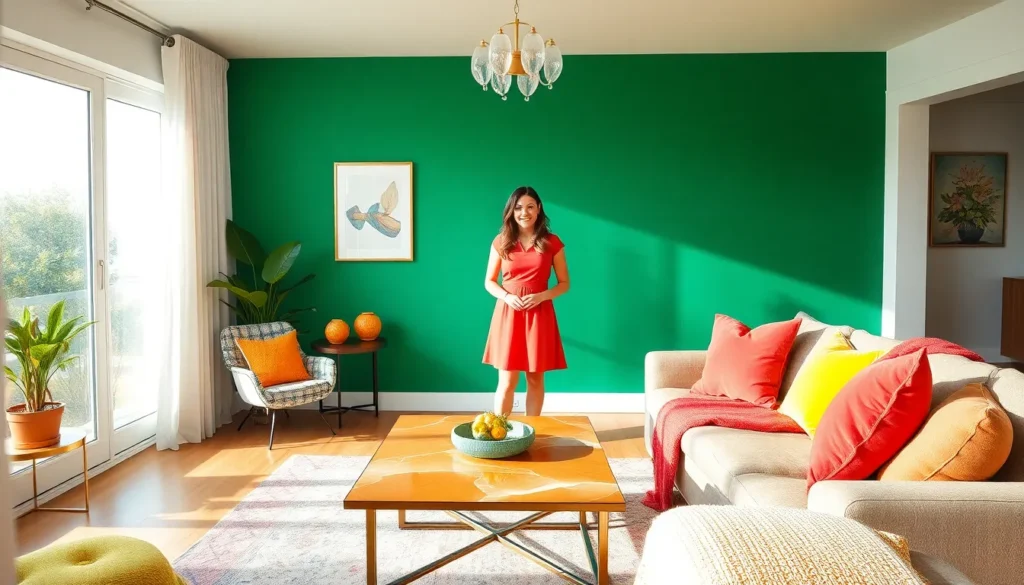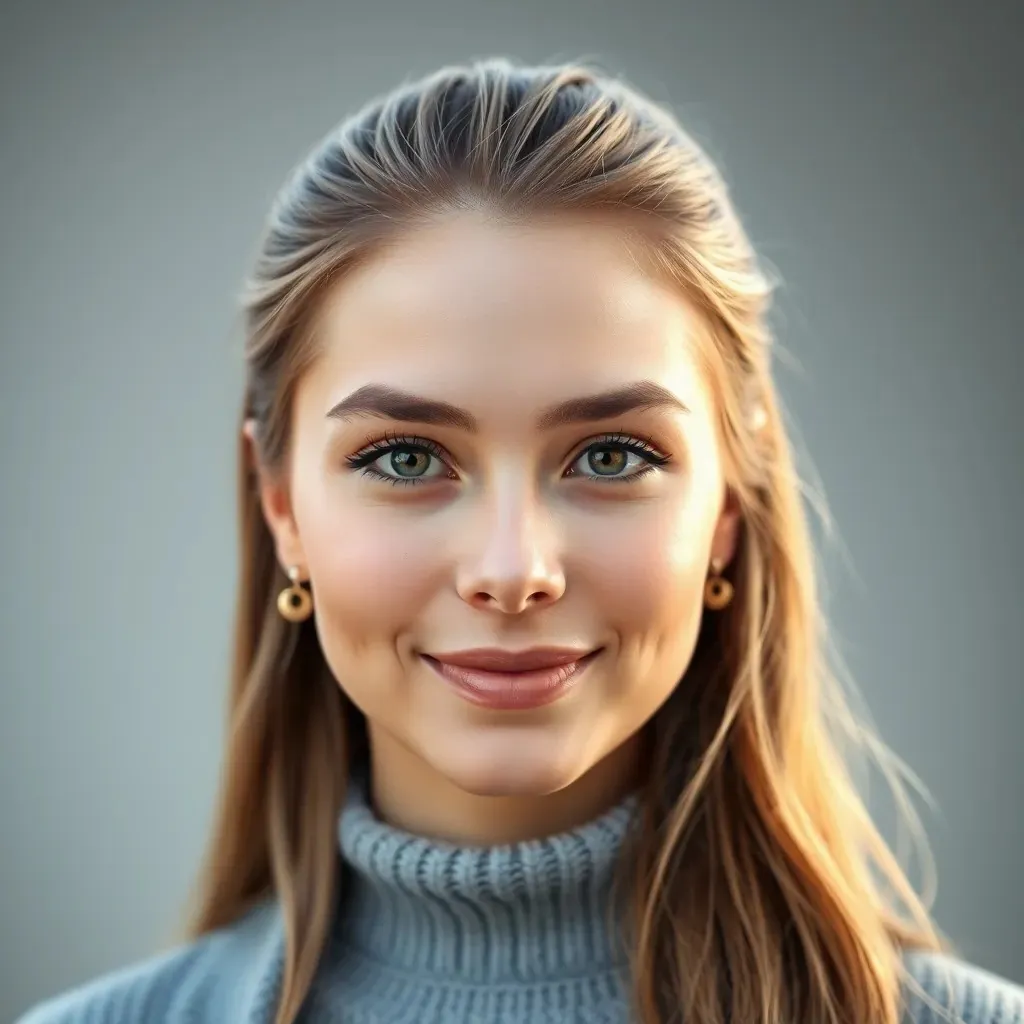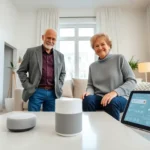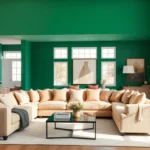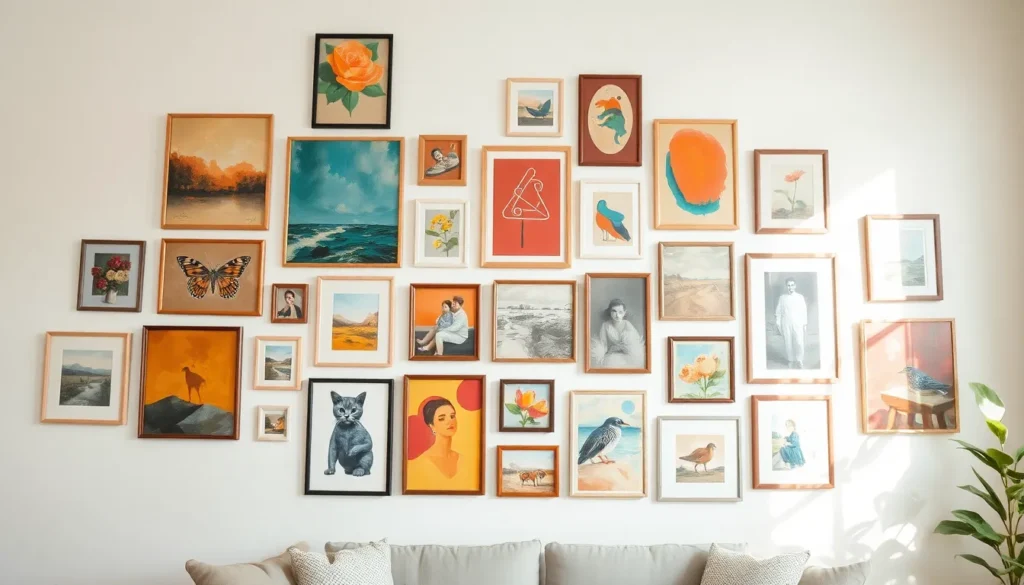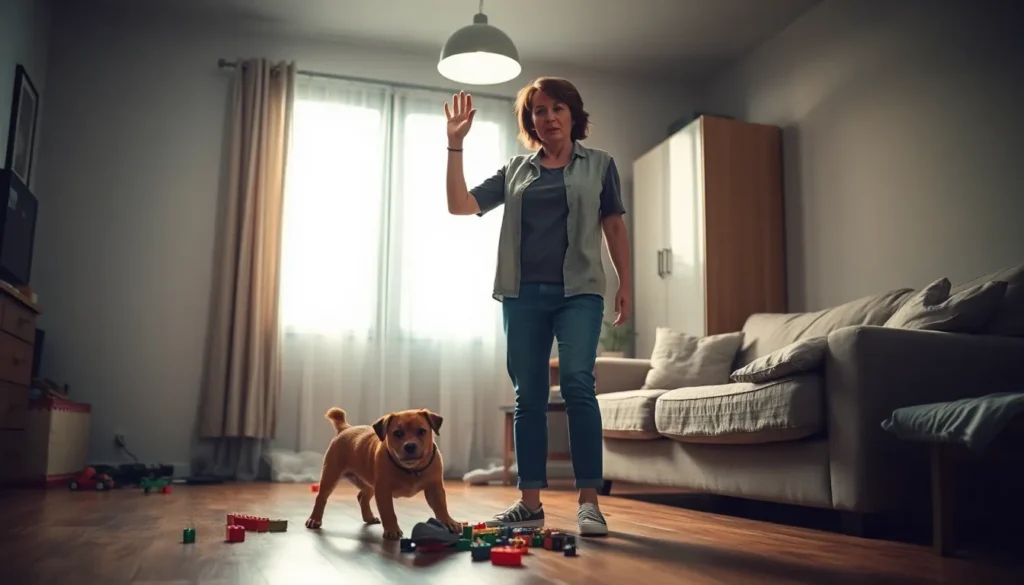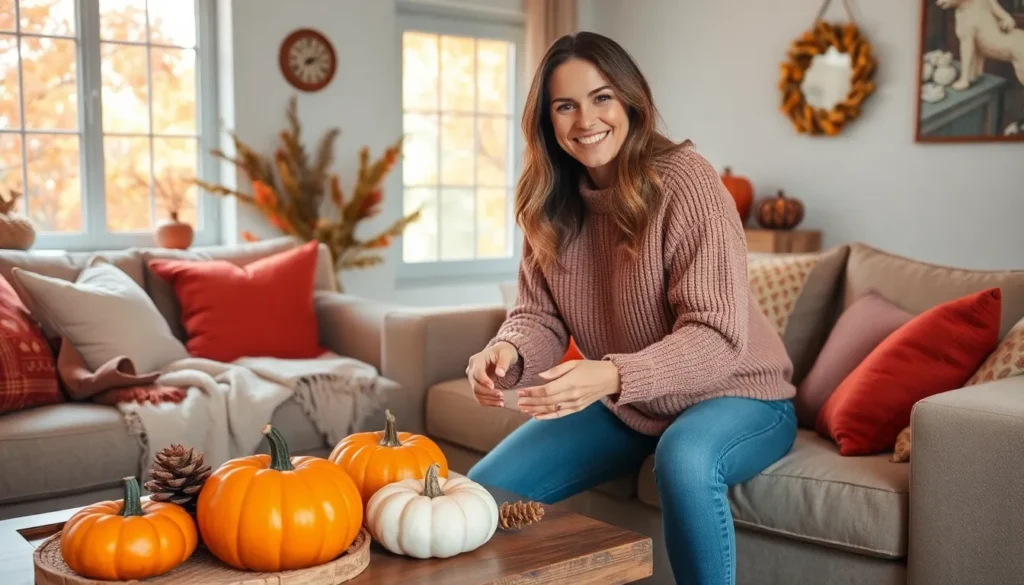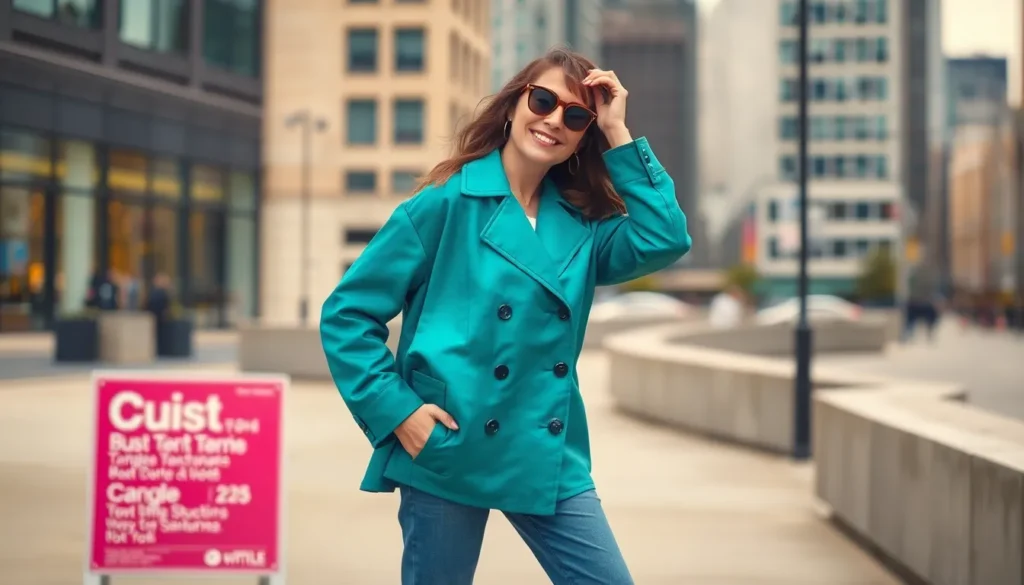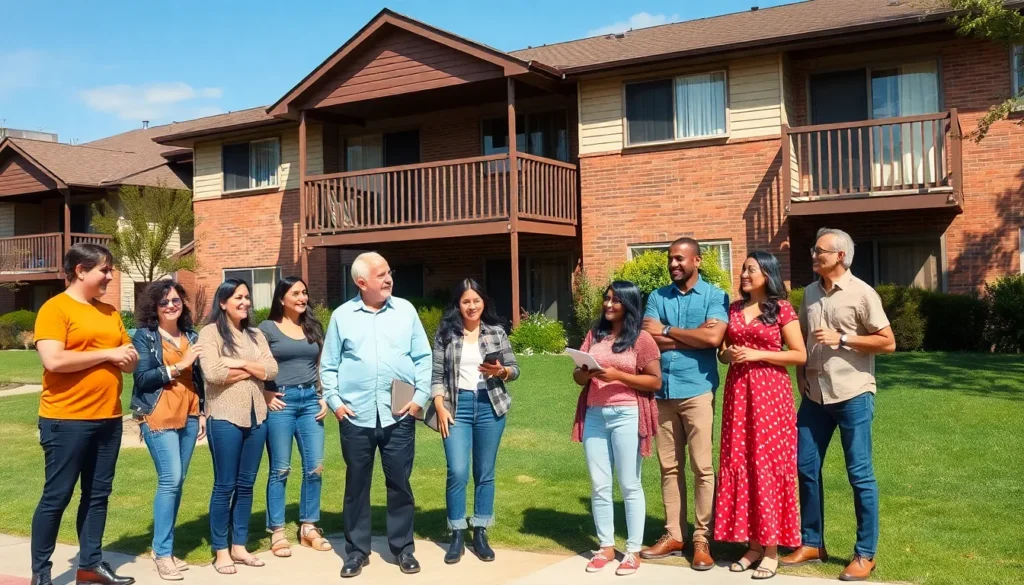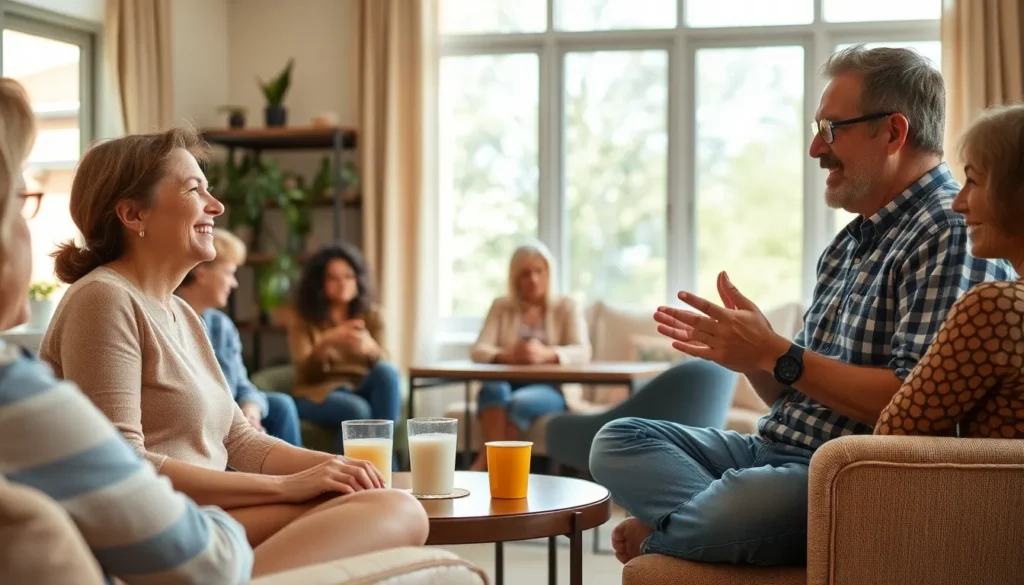In a world where beige has been the reigning champion of interior design for far too long, it’s time to shake things up. Color trends in interiors are like the latest fashion runway – they bring excitement and a splash of personality into our spaces. Who knew that a bold shade of teal could make a living room feel like a tropical getaway?
Overview of Color Trends in Interiors
The transition from beige as a dominant color in interior design emphasizes a bold new era filled with vibrant hues. Bright colors, such as teal and emerald, introduce energy and personality into various living spaces. Designers recognize the power of vivid tones to create atmospheres that reflect individuality and style.
Past trends often relied heavily on neutral palettes, which sometimes resulted in uninspiring environments. Today’s movement toward saturated colors offers numerous opportunities to enhance aesthetics and mood. For example, a splash of coral can elevate a room’s overall appeal, making it feel fresh and inviting.
Texture plays a crucial role in how color is perceived. Combining matte finishes with glossy accents can create dynamic contrasts that draw the eye. Furthermore, layering different shades within the same color family adds depth and interest to interiors.
Many homeowners embrace the concept of accent walls to showcase richer colors while maintaining balance in the overall design. Styles like modern bohemian and minimalist incorporate color strategies that celebrate creative expression. A well-placed vibrant chair or decorative piece often serves as a focal point, infusing life into a space.
Outdoor-inspired hues such as turquoise and sunny yellows connect interiors with nature. Incorporating these shades not only invites the tranquility of the outdoors inside but also promotes well-being. By leveraging these color trends, individuals can cultivate spaces that resonate with their personalities and lifestyles.
Historical Context of Color Trends
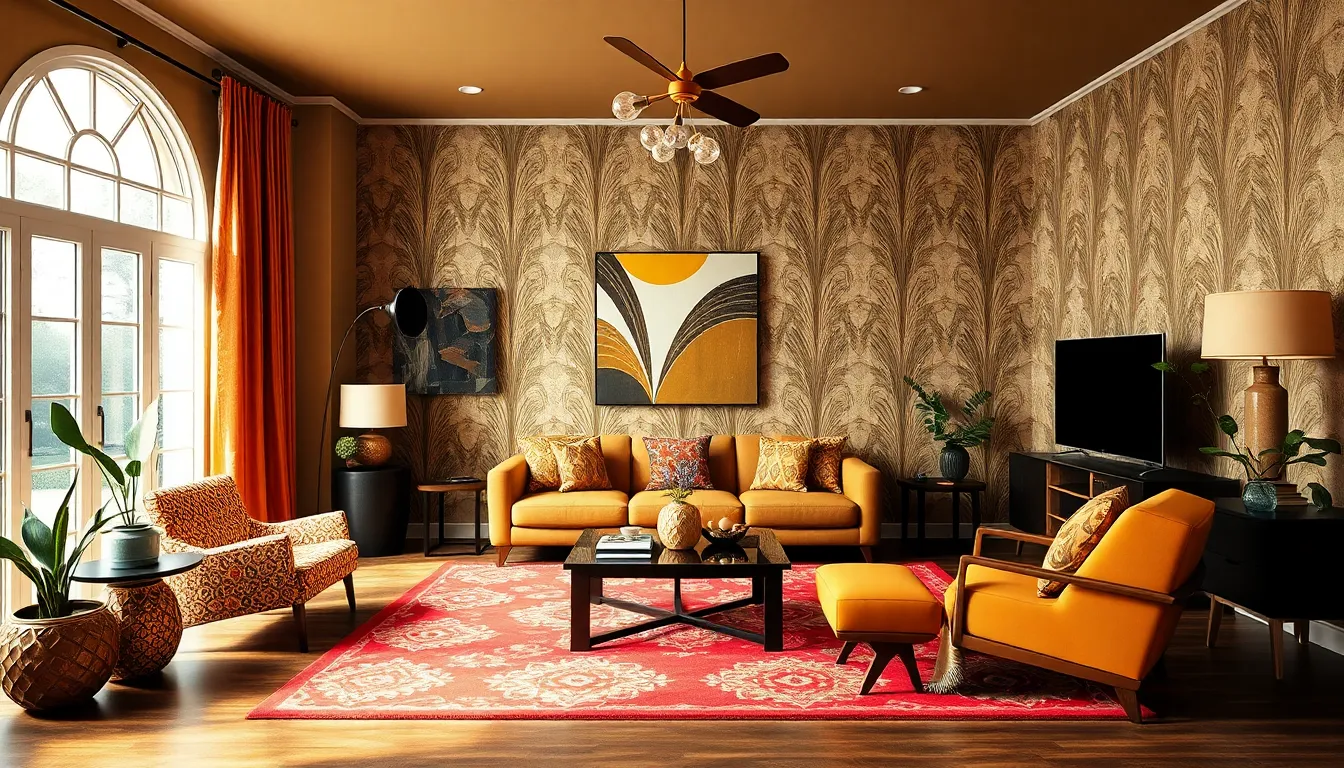
Color trends in interiors evolve in response to cultural shifts, technological advancements, and prevailing design movements. Understanding the historical context reveals how these trends shape today’s vibrant palettes.
Influential Design Movements
Art Deco introduced bold colors and geometric patterns, emphasizing luxury and elegance. Following this, the Mid-Century Modern movement celebrated organic forms, favoring earthy tones like olive green and mustard yellow. The minimalist trend, emerging in the late 20th century, focused on simplicity and neutral color schemes, favoring clarity over complexity. Each movement contributed to a distinct shift in color preferences, influencing contemporary interior design choices.
Significant Color Palettes Over Time
Color palettes reflect broader societal changes. The 1960s embraced psychedelic colors, showcasing bright oranges and pinks, while the 1970s shifted towards earthy hues like browns and rust. In contrast, the 1980s embraced pastels, creating soft and inviting environments. The 1990s favored muted tones, transitioning toward the beiges of the early 2000s. Each decade’s palette left an imprint on interior design, paving the way for today’s bold and expressive color trends.
Current Color Trends in Interiors
Current color trends showcase a vibrant shift towards bold hues in interior design. Individuals increasingly favor colors that reflect their personality and contribute to uplifting environments.
Popular Color Schemes
Popular color schemes in 2023 include deep greens, rich blues, and warm terracottas. Deep greens evoke a sense of calmness, while rich blues add sophistication to spaces. Contrasts between these colors and warm terracottas create inviting aesthetics. Earthy tones align well with natural textures, promoting well-being. Bright accent colors, like coral and sunny yellow, enhance these schemes, infusing energy into rooms. Homeowners often choose combinations that inspire creativity and comfort, showcasing a personal touch in their interiors.
Innovative Color Combinations
Innovative color combinations continue to captivate interior design enthusiasts. Pairing teal with blush pink creates a striking balance, appealing to modern tastes. Deep emerald paired with soft beige breathes life into traditional spaces. Unexpected mixes of color, such as mustard yellow and slate gray, inject a contemporary flair into designs. Layering these colors with various textures adds depth to interiors. Creative uses of color, particularly through statement furniture, help define personal style while enhancing overall ambiance. Embracing these innovative combinations allows individuals to express their unique aesthetics and connect with their living spaces.
Impact of Color on Interior Design
Color plays a crucial role in interior design, influencing mood and perception. The choice of color can enhance aesthetics, evoke emotions, and create inviting environments.
Psychological Effects of Colors
Colors impact emotions and behavior significantly. For instance, blue instills calmness, while yellow radiates energy. Adding deeper shades of green fosters a sense of balance and renewal, making spaces feel serene. Bright hues like coral or vibrant teal inject joy, enhancing overall well-being. Understanding the psychological implications helps homeowners select colors that align with desired atmospheres. Color psychology directly informs design choices, allowing spaces to reflect individual personalities and provoke intended feelings, such as peace or excitement.
Practical Applications in Space Planning
Utilizing colors strategically improves space planning effectiveness. Selection of shades influences the perception of space; lighter tones expand areas visually, while darker hues create intimacy. An accent wall in rich navy can serve as a focal point, drawing attention and adding depth. Thoughtfully applied color schemes enhance room functionality, separating different zones. Mixing textures, such as matte and glossy finishes, elevates the overall visual experience. Innovative spatial designs use color to define specific areas, promote flow, and harmonize decor elements, resulting in cohesive and engaging interiors.
Future Predictions for Color Trends
Trendsetters anticipate a continued shift towards vibrant, expressive colors in interior design. Expect deep and rich tones like emerald green and navy blue to remain popular choices. Additionally, the growing interest in sustainable design influences color preferences, as homeowners opt for shades inspired by nature. Earthy hues such as terracotta and olive green reflect this connection to the environment, promoting a sense of well-being.
Design experts suggest that color blocking can become a prominent technique, allowing bold colors to coexist harmoniously within a space. Mixing unexpected hues, like mustard yellow with slate gray, will create striking contrasts and visual interest. Mood-driven palettes might gain traction, ensuring color selections cater to specific emotional responses and enhance the atmosphere of rooms.
Outdoor influences continue to play a role in color trends, with soft pastels reminiscent of sunsets joining the conversation. Colors like blush pink, muted lavender, and light mint connect interiors to serene natural settings. These shades offer tranquility while encouraging creativity and comfort.
Moreover, advancements in paint technology provide endless possibilities for color applications. Finishes that change appearance with light can shift the ambiance throughout the day. This innovation allows homeowners to experiment with dynamic color schemes, reflecting their evolving tastes.
Personal expression through color is expected to rise. Customized palettes that incorporate individual styles will become a fixture in interior design. The impact of social media and digital platforms will encourage sharing inspiring color combinations, reinforcing a sense of community among design enthusiasts.
Embracing vibrant colors in interior design marks a significant shift towards personalization and creativity. Homeowners are no longer confined to neutral palettes but are instead exploring bold hues that reflect their unique styles and enhance their living spaces. The interplay of color and texture creates dynamic environments that evoke specific emotions and foster well-being.
As trends continue to evolve, the influence of nature and sustainable practices will shape future color choices. This ongoing exploration of color not only transforms interiors but also enriches the overall living experience. By adopting these trends, individuals can cultivate spaces that are not just visually appealing but also deeply connected to their identities.

